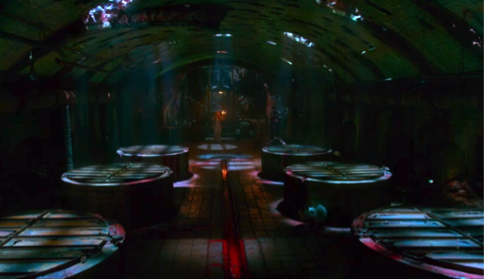Ghosts are Real: Digital Spectatorship within Analog Space in Crimson Peak
Written By Patrick Brame The prologue of Guillermo Del Toro’s 2015 film Crimson Peak begins with a white screen fading in on the disheveled, distraught, and bloodied protagonist, Edith, proclaiming, “Ghosts are real… This much I know.” Del Toro presents to the audience Edith’s first interaction with a ghost with a flashback of Edith’s mother’s funeral. On a stormy night, as young Edith weeps in her bed, the audible tick tock of a clock abruptly stops, with the shot lingering down a dimly lit hallway. A translucent, gaseous woman in a black dress slowly approaches and crawls into bed with her daughter. Edith’s mother returns to warn her, “When the time comes, beware of Crimson Peak,” then disappears from the room. As the camera exits Edith’s bedroom, retreating backwards down the hallway, Edith’s voice-over claims, “It would be years before I again heard such a voice. Or understood its desperate warning. A warning from out of time. And one I came to understand only when it was too late.” The end of the prologue fades …


